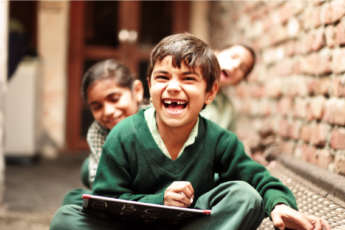A Look at the State of Foundational Literacy and Numeracy in India
Foundational Learning is an essential building block for the future knowledge we are yet to attain, for it provides the essential fundamentals of reading, writing, vocabulary, mathematics and literacy skills needed by school-aged children. If children fall behind in the early years of schooling, they are likely to underperform and fail to achieve their full potential.
In India, many children do not have access to a preschool or childcare program, and there are very few pre-primary schools that focus on the needs of very young children. To ensure all children are on the same playing field with respect to learning, it is crucial to prioritize education during these early years.
The Economic Advisory Council to the Prime Minister (EAC-PM) released a report on the State of Foundational Literacy and Numeracy (FLN) in India, highlighting the importance of FLN in the Indian context. The report establishes a composite index on the five key domains that govern the learning environment for children aged below ten across 41 indicators. These domains include:
- Education infrastructure
- Access to education
- Basic health
- Learning outcomes, and
- Governance.
The methodology adopted to assign the weight in the index is Principal Component Analysis (PCA).
The study indicates that some states lagged behind in the Governance pillar, with over half of the states scored below the national average—the lowest across all pillars. This data helps states assess their budgetary measures and identify any gaps hampering progress in education.
Following are some key takeaways from the report:
- Kerala leads the pack as the top-scoring region among smaller states, with a score of 67.95
- West Bengal is the top-scoring region among large states, with a score of 58.95.
- Lakshadweep is the leading Union Territory with a score of 52.69, while Mizoram is the highest ranked state in the Northeast state category, with 51.64%.
- Some states score higher than others on the issue of access to education. Rajasthan and Gujarat score 25.67 and 22.28, respectively, whereas Bihar scores 18.23%. By contrast, the northeastern states as a whole do significantly better in terms of access to education. The states in this region average 51.3%.
- The educational standards in Kerala are vastly different from the rest of the country. This significant variation has been noticed in the learning outcomes and educational infrastructure, which needs immediate attention from all the states. There is a marked difference in the percentage of literacy in various states. The highest literacy rate was recorded in Kerala, with 96.2%. The lowest was registered in Rajasthan, with 69.7%.
- The findings in the report reveal a literacy gap between males and females. While the national literacy rate for males is 84.7%, the literacy rate for females is only 70.3%.
- Although all states can gain critical insights from high performers, they can also learn from each other, even if some are lower performers. Finding out what is working in other states when addressing challenges might be a helpful starting point.
Speaking at the report’s release, Dr. Bibek Debroy, Chairman, EAC-PM, said, “Education leads to positive externalities, and the quality of education imparted is essential, especially during the formative years. The present attainments in literacy and numeracy and the variations among states should be the focus for remedial action.”
Offering his perspective, Square Panda India MD Ashish Jhalani had this to say: “Right education, accessibility to resources, teacher-child relationship and lastly educational infrastructure especially in rural areas are the key areas which our country needs to focus on. Expansion of technology in education will not replace teachers but enhance the solutions for children in the existing education system.”
The report, co-authored by Square Panda India MD Ashish Jhalani, presents evidence of factors contributing to India’s low learning outcomes in early grades and offers pathways for improvements.
To read the full report, click here: https://competitiveness.in/wp-content/uploads/2021/12/Report_on_state_of_foundational_learning_and_numeracy_web_version.pdf
Square Panda India has been at the forefront of research in education technology and is now leveraging that to deliver high-quality early learning products to preschool children across India. With our research in pedagogy, we have configured our content and blended it with an interactive digital platform to be specific to the Indian content standards and benchmarks highlighted by the National Education Policy. As kids become increasingly tech-savvy, it’s essential to develop them as critical and creative thinkers at an early age so that they can meet the demands of today’s fast-paced world.
To know more about our work across the education ecosystem, visit https://ecce.squarepanda.in/





Leave a Comment